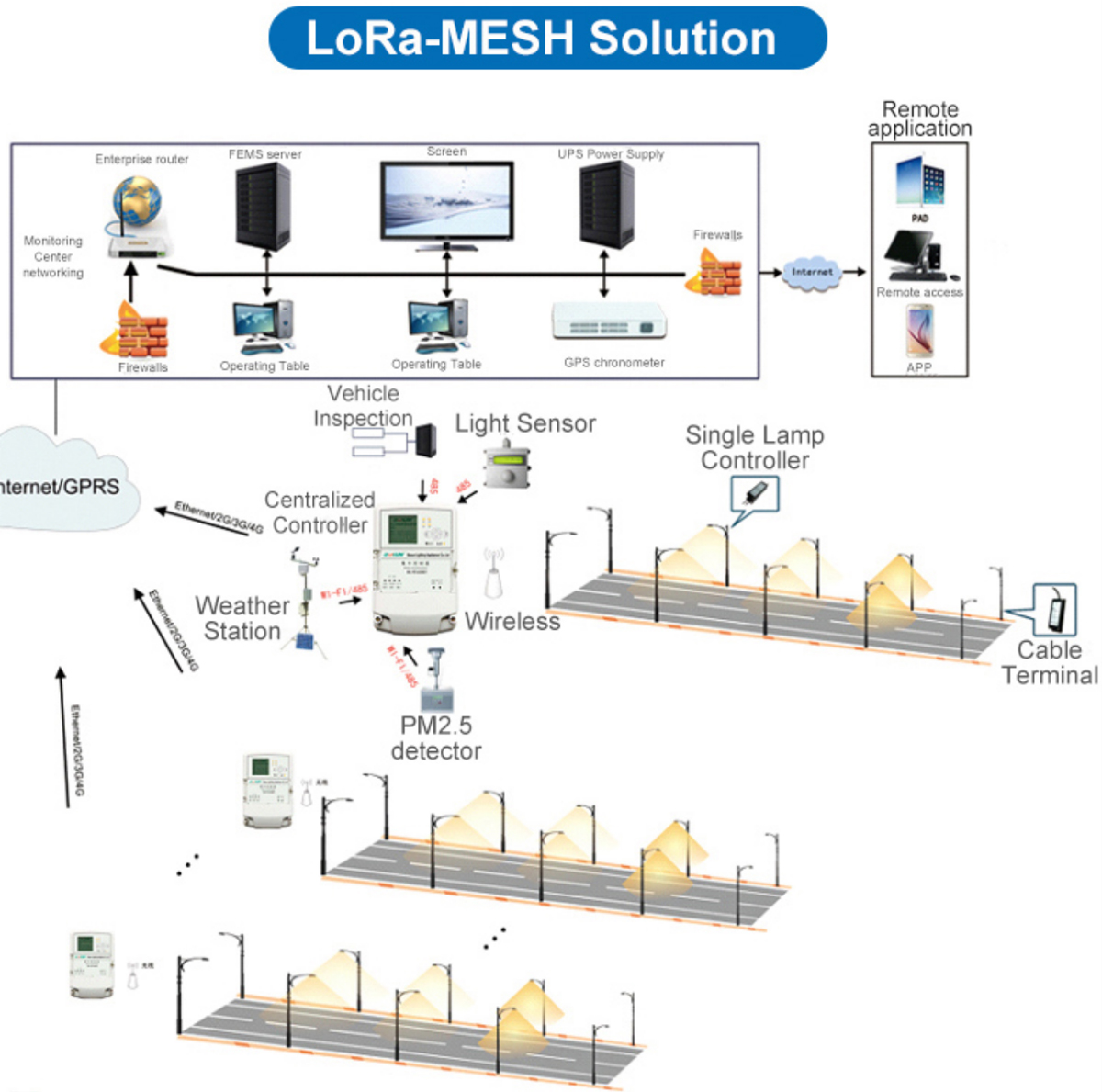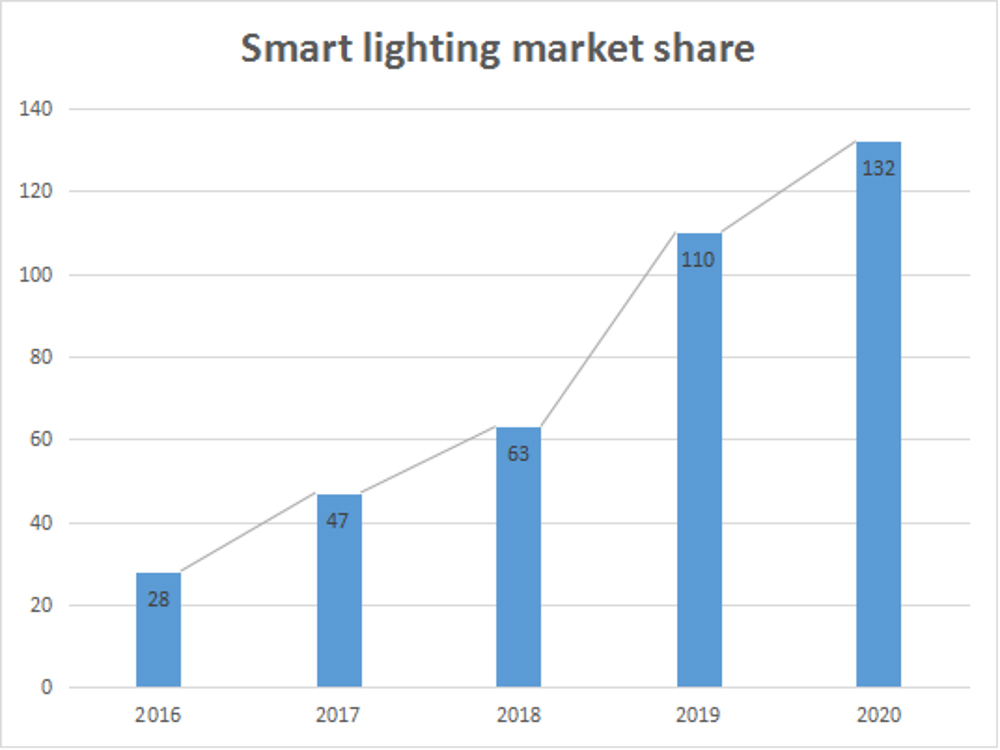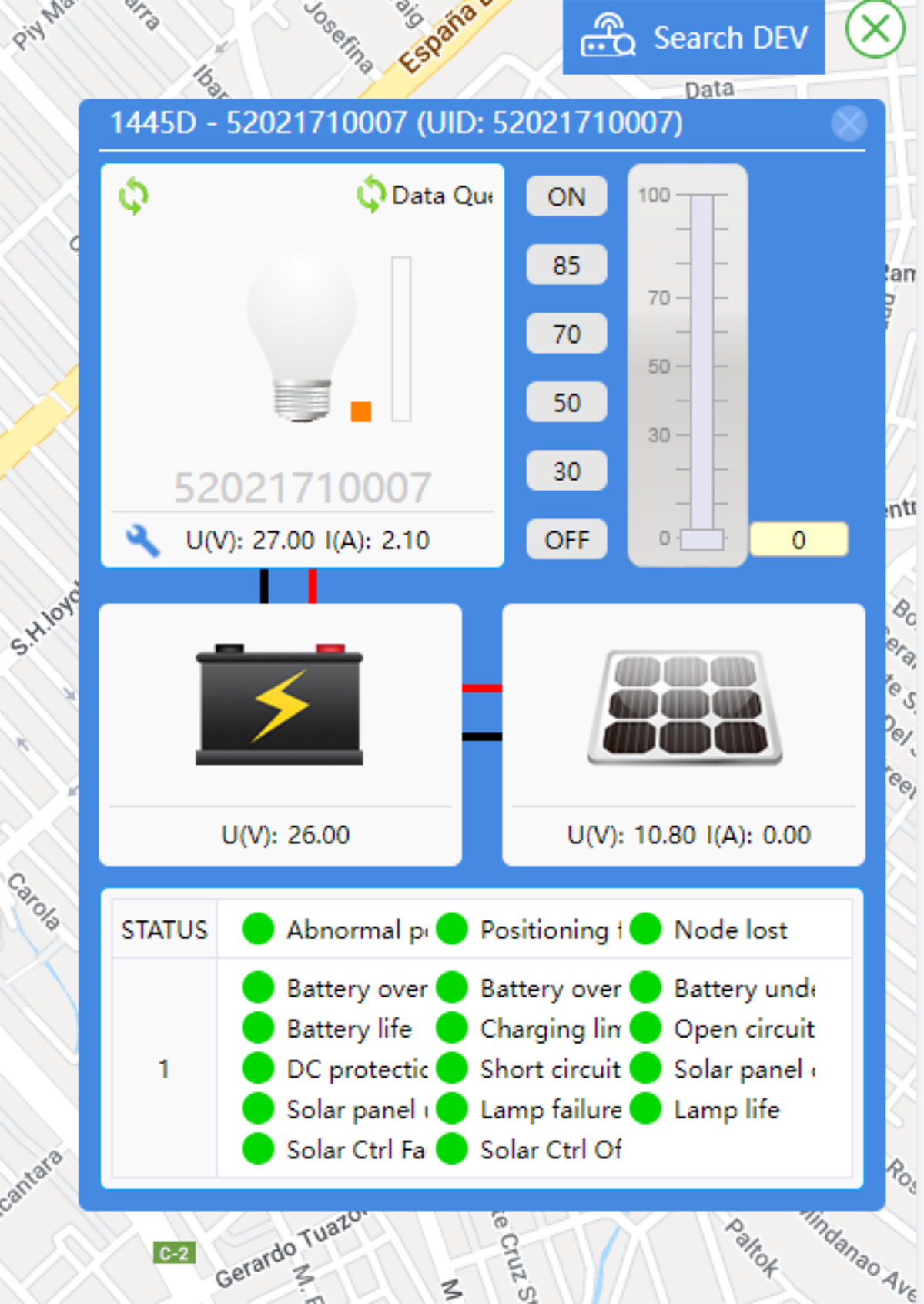Smart lighting is also called smart public lighting management platform. It realizes remote centralized control and management of street lamps by applying advanced, efficient and reliable power line carrier communication technology and wireless GPRS/CDMA communication technology. Functions such as automatic brightness adjustment for traffic flow, remote lighting control, active failure alarm, anti-theft of lamps and cables, and remote meter reading can greatly save power resources, improve public lighting management, and save maintenance costs.
With the increase in the application of LED lights and the development of the Internet and intelligent technology, the intelligent lighting industry will usher in new development. According to the data, the global smart lighting market has entered a stage of rapid development. In 2020, the global smart lighting market will exceed 13 billion yuan, but due to the impact of the new crown epidemic, the growth rate has slowed down.
What functions do smart lighting have?
1. Remote measurement of street lamp current, voltage and other electrical parameters, remote control switch of street lamps, remote monitoring of on-site operation of important road sections, etc.
2. Monitor the temperature of the LED street lamp chip pad or the temperature of the lamp shell and diagnose the fault.
3. Dimming by daylight induction or human-vehicle induction, as well as time control and even RTC dimming in energy-saving control.
4. According to the monitoring data of lamps and lanterns, timely grasp the location and cause of abnormal street lamps, and carry out purposeful maintenance instead of going to the whole city for inspection, which speeds up the maintenance speed and reduces the maintenance cost.
5. The lighting standard level of the same road changes with time and traffic flow to become a variable value. For example, the brightness of some newly developed roads can be lower in the initial stage of traffic. After a period of time or by monitoring the traffic flow to a certain threshold, the full brightness is turned on. .
6. In some areas where there are few people and vehicles, it can be time-controlled half-brightness in the middle of the night, but when people and vehicles pass by, it reaches a certain distance in front of the full brightness, and the rear will return to the original brightness after a few seconds.
As an important part of smart cities, smart street lights have also been highly valued and vigorously promoted by relevant departments around the world.
At present, with the acceleration of urbanization, the purchase volume and construction scale of urban public lighting facilities are increasing day by day, forming a huge purchase pool. However, the resulting contradictions in urban lighting management are becoming more and more obvious. The three most prominent contradictions are the huge consumption of energy, the high maintenance cost of lighting fixtures, and the incompatibility with other public equipment. The emergence of smart lighting will undoubtedly greatly change this situation and effectively promote the acceleration of the smart city process.
Post time: Aug-09-2022




